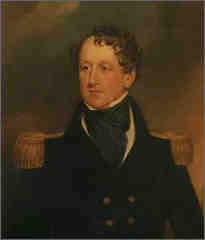Captain William Bunbury McClintock Bunbury
- Born: 8 Sep 1800, Dublin, Leinster, Ireland UK
- Marriage (1): Pauline Caroline Diana Mary Stronge on 3 Nov 1842 in Lisnavagh, County Carlow, Ireland 847
- Died: 2 Jun 1866, Lisnavagh, County Carlow, Ireland at age 65 847
Noted events in his life were:
• source.
• note. 847
William married Pauline Caroline Diana Mary Stronge on 3 Nov 1842 in Lisnavagh, County Carlow, Ireland.847 (Pauline Caroline Diana Mary Stronge was born circa 1815 in Tynan Abbey, Tynan, County Armagh Ireland and died on 1 Jan 1876 in Lisnavagh, County Carlow, Ireland 847.)
|
